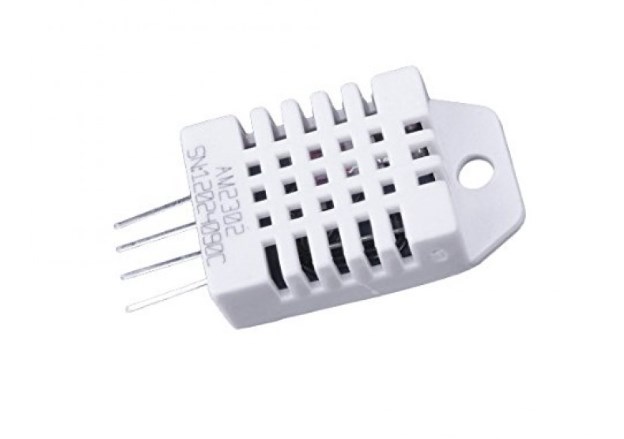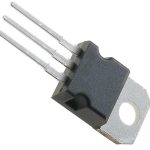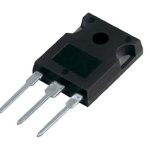The DHT22 sensor is a versatile digital temperature and humidity sensor that finds applications in various fields. In this comprehensive guide, we will explore everything you need to know about the DHT22 sensor. By the end of this blog, you’ll have a solid understanding of how to effectively utilize the DHT22 sensor for accurate temperature and humidity measurements.
What is a DHT22 sensor?
The DHT22 sensor is a digital temperature and humidity sensor. It is commonly used in various applications that require monitoring and controlling environmental conditions.
How does it work?
The DHT22 sensor works by utilizing a capacitive humidity sensor and a thermistor to measure humidity and temperature, respectively. Inside the sensor, there is a thin film of moisture-sensitive material that changes its electrical conductivity based on the relative humidity. This change is then converted into a digital signal by an integrated circuit within the sensor.
What is the function of the DHT22?
The function of the DHT22 sensor is to accurately measure both temperature and humidity levels in the surrounding environment. It provides real-time data that can be used for monitoring purposes or as input for control systems. The sensor outputs the measured values in a digital format, making it easy to interface with microcontrollers or other devices.
Features
- Accurate measurements: The DHT22 sensor provides reliable and precise readings for both temperature and humidity.
- Wide measurement range: It can measure temperatures ranging from -40°C to 80°C (-40°F to 176°F) and humidity levels from 0% to 100% RH.
- Low power consumption: The sensor operates at a low voltage and consumes minimal power, making it suitable for battery-powered applications.
- Digital output: The DHT22 communicates via a single-wire digital interface, simplifying the connection to microcontrollers.
- High resolution: It offers a resolution of 0.1°C for temperature and 0.1% RH for humidity, allowing for detailed monitoring.
- Quick response time: The sensor responds quickly to changes in temperature and humidity, enabling real-time monitoring.
Advantages and Disadvantages
Advantages:
- Accurate measurements: The DHT22 sensor provides reliable and precise readings.
- Wide measurement range: It can measure a wide range of temperatures and humidity levels, making it suitable for various applications.
- Easy to use: The digital output and simple interface make it easy to integrate with microcontrollers or other devices.
- Low power consumption: The sensor operates efficiently, consuming minimal power.
- Affordable: The DHT22 sensor is relatively inexpensive compared to other temperature and humidity sensors.
Disadvantages:
- Sensitivity to high humidity: In extremely humid environments, the sensor may experience slight inaccuracies in humidity measurements.
- Limited refresh rate: The DHT22 has a limited sampling rate, which means it may not be ideal for applications that require frequent data updates.
- Fragility: The sensor is delicate and needs to be handled with care to avoid damage.
The Life expectancy
The life expectancy of the DHT22 sensor, like any electronic component, can vary depending on various factors such as usage conditions, operating environment, and proper handling.
In general, the DHT22 is designed to have a relatively long lifespan when used within its specified operating conditions. It is rated for continuous operation and has a typical service life of around 2-5 years. However, it’s important to note that this estimate is based on standard operating conditions and may vary in real-world scenarios.
Datasheet
You can check: DHT22 Datasheet
DHT22 Price
You can make a budget by referencing the price table below:

DHT22 Applications
- Weather monitoring: The DHT22 is commonly used in weather stations and meteorological applications to measure temperature and humidity levels.
- HVAC systems: Heating, ventilation, and air conditioning (HVAC) systems utilize the DHT22 sensor for accurate temperature and humidity control.
- Agriculture: The sensor can be employed in agricultural applications such as greenhouse monitoring, crop management, and irrigation control.
- Home automation: DHT22 sensors are used in smart home systems to monitor and regulate indoor environmental conditions.
- Industrial automation: The DHT22 finds its use in industrial settings where precise temperature and humidity measurements are required for process control and equipment monitoring.
- Data logging: The sensor is often utilized in data logging applications to record temperature and humidity data over time for analysis and optimization purposes.
FAQs
How reliable is DHT22?
The reliability of the DHT22 sensor is generally considered to be good. It provides consistent readings when used within its specified operating range and under normal conditions. However, it’s important to note that external factors such as electrical noise, extreme temperatures, or high humidity levels can affect the sensor’s performance. Proper calibration, regular maintenance, and careful handling can help ensure reliable operation.
How accurate is the DHT22 sensor?
The DHT22 sensor offers a reasonable level of accuracy for most applications. It has an accuracy of ±0.5°C for temperature measurements and ±2% RH for humidity measurements. However, it’s important to consider that accuracy may vary slightly depending on external factors and the quality of the specific sensor being used. Calibrating the sensor periodically against a known reference can further improve its accuracy.
Is DHT22 the same as the DHT11?
No, the DHT22 and DHT11 sensors are not the same. While both sensors are manufactured by the same company and provide temperature and humidity measurements, they have some differences in terms of performance and specifications. The DHT22 has a wider measurement range, higher accuracy, and better resolution compared to the DHT11. Additionally, the DHT22 has a faster response time and can operate at a wider voltage range.
What is the difference between DHT22 and AM2302?
The DHT22 and AM2302 are actually the same sensor but may be referred to by different names. The term DHT22 is commonly used to describe the sensor itself, while AM2302 refers to the specific model number of the sensor module. Essentially, there is no difference between the DHT22 and AM2302 in terms of functionality or specifications.

Conclusion
Now that you have a comprehensive understanding of the DHT22 humidity and temperature sensor, you can confidently incorporate it into your projects. Whether you’re automating your home, or optimizing agricultural processes, the DHT22’s accuracy and reliability make it a valuable tool. Remember to handle the sensor with care, calibrate it periodically, and consider the environmental factors that may affect its performance.



